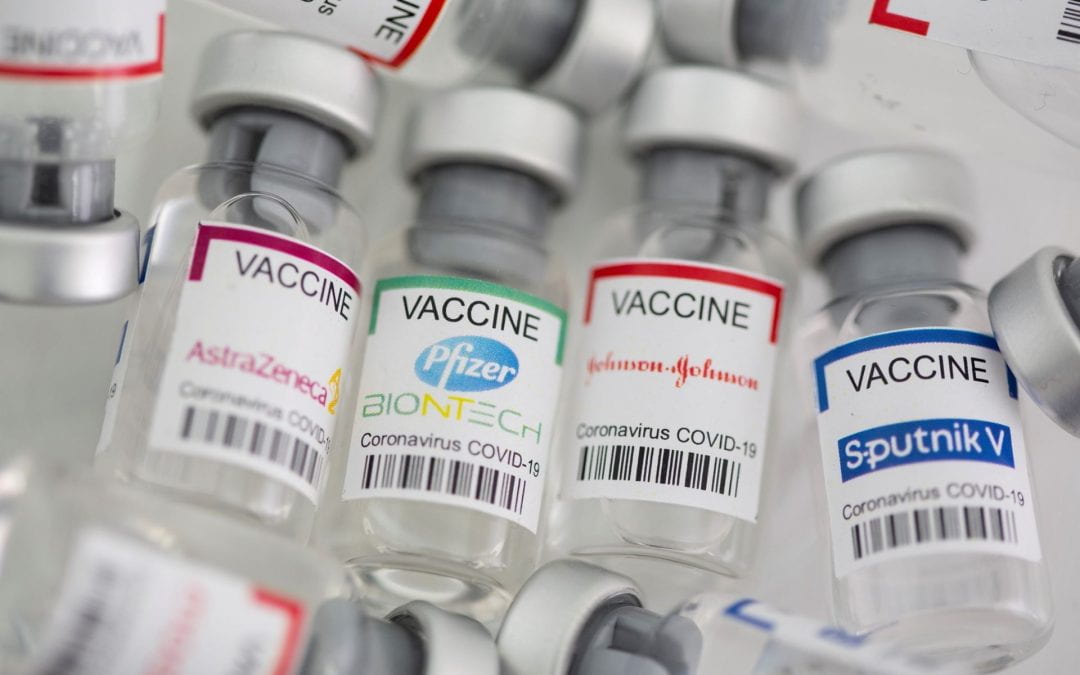By Layth Hert, JHBL Staff Member
From around mid-March 2020 until today, the world as we know it has gone through an extremely challenging time due to the COVID-19 pandemic, and significant impacts resulted on the health care workers throughout the world.[1] Fast forward to the later months of 2021, various pharmaceutical companies had developed possible vaccines to attempt to treat this disease that was killing and hospitalizing people from all ages and social groups, such as Pfizer, Moderna, Johnson & Johnson.[2] The typical patent pendency period after an application to the United States Patent and Trademark Office (“USPTO”) is two and a half to three years..[3]
Due to the novelty and nature of COVID-19 and the rate at which it was affecting people worldwide, the U.S. waived the patentability requirement of the respective Pfizer and Moderna vaccines, until that pandemic has passed, in order to allow access to all, regardless of a country’s resources.[4] We then have to take into account what parties were involved in issuing such a patent, and what factors were taken into account for such a global action.[5] Could this potentially be applied to other areas of health care and biomedical law? Is gatekeeping pharmaceutical drugs ethical only until a pandemic has threatened the lives of millions of people where a patent waiver ought be enforced?[6]
While pharmaceutical companies such as Pfizer and Moderna have been working on such a vaccine years prior to the incidence of the COVID-19 pandemic, particularly looking at gene sequencing in the mRNA, it became clear that the USPTO took extensive measures to expedite the process of issuing such a vaccine.[7] People have argued that the topic of the vaccine and COVID-19 overall has generated substantially mixed feelings among society, while also keeping in mind the requisite diagnostic testing required to ensure accuracy and reliability, which would take months if not years to achieve.[8] The overwhelming response to the pandemic has added significant pressure on pharmaceutical industries to provide a treatment or vaccine in a timely fashion, such as Moderna, Pfizer, and Johnson & Johnson.[9]
Proponents of patent protection argue that pharmaceutical industries will be disincentivized from researching and developing such vaccines and medications, resulting in an unfair market advantage to such companies; licenses are available for that reason.[10] Proponents of patent waivers for COVID-19 argue that high-income countries typically hold the most resources and access to vaccines and treatment, so, in order for the COVID-19 vaccine to reach all populations alike, regardless of a country’s wealth or one’s socio-economic status, and that licensing is not only expensive but also time consuming.[11]
Harvey Rubin M.D. Ph.D. and Nicholas Saidel J.D. proposed a solution. They asserted that patent waivers were not sufficient to ensure worldwide and equitable access to the vaccine: pharmaceutical companies ought partner with governmental agencies (“PPP;” public-private partnership), both being well-funded with sufficient capital markets available, which would benefit both the pharmaceutical companies, the public sector, as well as the general population.[12] On the other hand, Brink Lindsey contends that intellectual property rights and pandemics ought be mutually exclusive, and patents are heavily detrimental to dealing with a pandemic, especially one that is unknown.[13]
Given the novelty of the COVID-19 pandemic, the patent waiver was granted for extraneous circumstances, and we ought ask ourselves whether such a waiver intrudes upon the rights of pharmaceutical industries to protect their inventions, or whether such waivers should be endorsed in similar circumstances. When it comes to an unknown pandemic where not much research has been conducted or known and people contracted such a disease at an exponential level, putting the general public at harm, then a waiver should override a patent—perhaps, in such circumstances, we ought to implement a PPP to ensure access and availability on a global scale. If a pharmaceutical company is concerned about their market value and the significant investments that it has made in researching and developing such a product, then a PPP ought to provide capital to such companies in order to ensure that they get a similar return that they would have gotten had the patent been enforced; this is done with the help of the public sector and general government agencies. It would be well-advised that the USPTO take such matter into consideration because it would clarify the scope of patent enforcement and litigation, allowing pharmaceutical industries, the public sector, and the general population to be better equipped at handling another pandemic. Therefore, IP rights, as they pertain to patents within the pharmaceutical industry, ought not override equity and access considerations when a novel disease affects a large part of the population; public health considerations ought to take priority over others, when the lives of millions of people are at risk.
Layth Hert is a second-year law student at Suffolk University Law School with an interest in intellectual property law. Layth graduated from Boston University in 2020 with a degree in Psychology. Layth interned for the Honorable William G. Young in the United States District Court for the District of Massachusetts, and is currently working as a law clerk at an immigration firm, in addition to being a staff member on the Journal of Health and Biomedical Law.
Disclaimer: The views expressed in this blog are the views of the author alone and do not represent the views of JHBL or Suffolk University Law School.
Sources
[1] https://www.aha.org/press-releases/2021-03-23-new-analysis-shows-continued-negative-impact-covid-19-hospital-health – :~:text=In 2020, COVID-19 undermined,led to sharply lower revenues (showing how the rise of hospitalizations had adverse effects on health care workers).
[2] https://www.statnews.com/2021/02/02/comparing-the-covid-19-vaccines-developed-by-pfizer-moderna-and-johnson-johnson/.
[3] See https://www.alacrita.com/blog/pharmaceutical-patents-an-overview; https://www.uspto.gov/patents/initiatives/usptos-prioritized-patent-examination-program (showing the process of a fast track patent); but see https://www.statnews.com/2021/05/06/waiver-of-patent-rights-on-covid-19-vaccines-in-near-term-may-be-more-symbolic-than-substantive/ (showing waiver of patentability on COVID-19 cases).
[4] https://www.statnews.com/2021/05/06/waiver-of-patent-rights-on-covid-19-vaccines-in-near-term-may-be-more-symbolic-than-substantive/
[5] Id.
[6] https://www.ft.com/content/d0c70cc2-0ffa-42dd-b0d0-0f76eeb273f0
[7] Id.
[8] https://www.nejm.org/doi/full/10.1056/nejmoa2034577
[9] https://ccbjournal.com/articles/new-praise-and-pressure-for-the-pharma-industry (exemplifying the larger implications on patenting and pressures on pharmaceutical industries).
[10] https://www.brookings.edu/blog/up-front/2021/08/31/innovation-beyond-patent-waivers-achieving-global-vaccination-goals-through-public-private-partnerships/
[11] Id.
[12] Id.
[13] https://www.brookings.edu/blog/up-front/2021/06/03/why-intellectual-property-and-pandemics-dont-mix/

